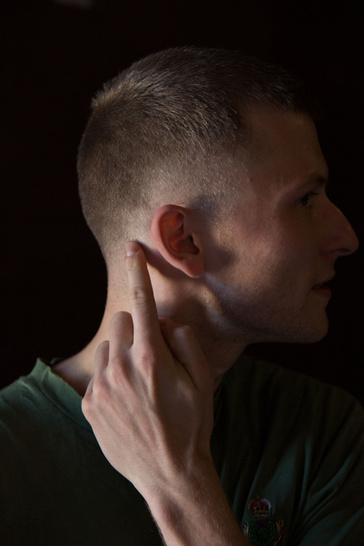On a standardly foggy, cold London afternoon, I rang the buzzer outside Maureen Paley. I’ve always found commercial galleries that require the ringing of a buzzer to allow visitors in to be somewhat intimidating and unapproachable. I suppose independent galleries do call out to a specific audience; a generally well-read, well-bred one, with sufficient funds and interest to invest in art. But let’s not go there quite yet.
Indeed, we were allowed in by a rapidly-moving girl into the flawlessly white-walled gallery space. I must admit I wasn’t very familiar with Tillmans’ work before this visit, but I had done some research on his work and read on his early career as a fashion photographer. At Maureen Paley, we found a collection of photographs, cleverly displayed in the white cube-like space – almost architecturally, juxtaposing the various sizes of the work, and making us aware of the verticality of the space, of the concrete ceiling and the linoleum floor.
Tillmans’ images show simple moments of a daily life, representing the same man throughout the show (a close friend): on a train journey, out for walks or a run, eating, drinking, sleeping. There’s a refreshing simplicity to this body of work, and, as the friend I was with described it, it felt like we’d witnessed those images before, at one point or other in our lives. The photographs were of simple (but not dull) composition, and showed a deep understanding of light and focus which, joined with an impressive printing technique, produced a lightweight, grey-filtered atmosphere. The simple lines of the photographs and the exhibition space briefly connected with the clearness of Modernist/Bauhaus-inspired architecture.
Tillmans presented a mixture of intimate close ups (“Engadin II”, “Augenlicht”, “Outer Ear“) and wide shots (“Alyscamps II”, “Warszawa-Berlin Express”), really showing his ability to use advanced digital methods, combined with ink-jet printing, which produces an incredibly detailed, sharp image, but obtains a softness unreachable with laser printing. The framing also impressed me – the smaller prints had the image purposely placed towards a corner of the printed sheet, or bleeding off the top edge, which introduced an interesting notion of layout and positioning. It insinuated the images on show belonged in a book, a personal journal of sorts, and had now (actually for the first time) been shown to a wider audience.
Written by Inês Neto dos Santos
Sources:
The New Yorker
Wikipedia
Maureen Paley
